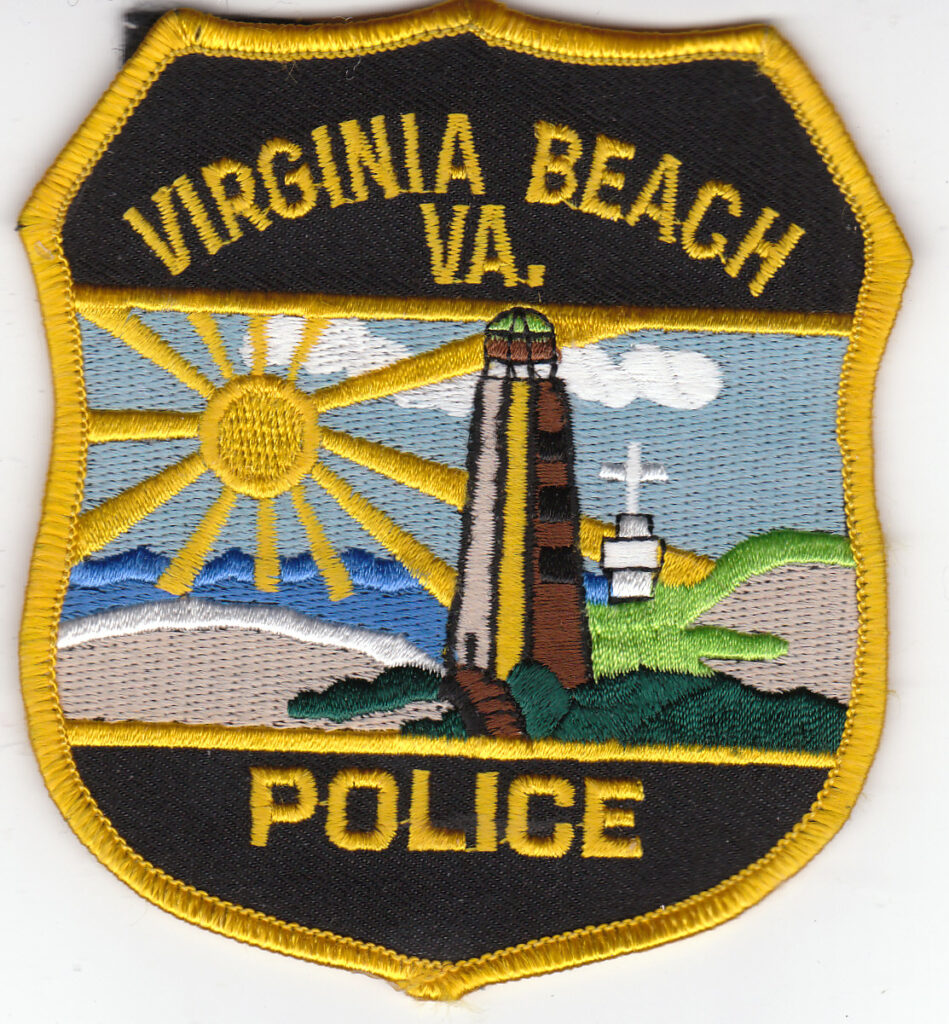The History of the Virginia Beach Police Department Motorcycle Unit
The primary responsibility of the Virginia Beach Police Department Motorcycle Unit, from its inception, is the reduction of traffic related incidents and deaths within the City of Virginia Beach through aggressive RADAR enforcement. The Motorcycle Unit responds to a number of traffic related incidents such as traffic accidents, disabled vehicles, funeral escorts, parades, marathons, and dignitary protection escorts.
The Town of Virginia Beach prior to 1963 was contained in the area north of the Rudee Bridge to 47th Street and from the Oceanfront west to Parks Avenue. The rest of the surrounding area, which is now Virginia Beach, was then Princess Anne County. In 1963, the two localities merged into one calling themselves the City of Virginia Beach.
An established history of a motorcycle unit with either Police Department was hard to locate prior to 1981. Research would indicate, through the Officer Down Memorial Page, that in 1923 a Motorcycle Officer was killed in the line of duty while chasing after a speeding car. Officer St. Elmo C. Trower was operating the police motorcycle on July 12, 1923 when his police motorcycle struck a buggy pulled by a horse and was tragically killed. To this day Officer Trower is the only known line of duty death involving a Police Motorcycle Officer in our city’s established history.
From the tragic incident of 1923 to the early 1970s, history of an established Motorcycle Unit is hard to find. Interviews of retired motorcycle officers indicated that the Department had a small contingent of motorcycles on standby. Those motorcycles were primarily used for special details such as parking enforcement and parades rather than the standard patrol and traffic enforcement operations in place today.
In June 1965 three motorcycles were added to the fleet of patrol vehicles. These motorcycles were given to the Second Precinct for summer oceanfront operations. The intended uses and patrol duties ranged from traffic control and special details to parking enforcement. Later, in 1968, the first three officers from our Department attended and successfully completed a Police Motorcycle Operators Course. This is the first documented certification that any of our motor officers would have attended and passed prior to being assigned to the Unit. The three motorcycle officers were allocated to the oceanfront summer operations from 1965 through 1972.
In the early 1970s, Colonel Bill Davis, the Chief of Police, sold what few existing Harley Davidson motorcycles the Department had. It was 1975 when the Department decided to purchase two motorcycles for traffic operations, with the authorization from Colonel Davis. The Department bought two Honda 550cc motorcycles. The duties for these motors consisted of parades, escorts, special events, and large public gatherings for traffic control purposes. The command’s idea in putting into operation the motorcycles was because of the flexibility and mobility they provided in necessary situations. Although these motorcycles were not the customary Harley Davidson police motorcycles, the officers took great P.R.I.D.E and outfitted these motorcycles in an attempt to resemble the traditional Harley Davidson police model. It was not until late 1976 that the Department purchased its third motorcycle, a Kawasaki Police 1000cc. This could have been the Department’s first attempt to have an established Motorcycle Unit in full use as a patrol platform.
It was not until November1981, when Sergeant A. M. Jacocks, Jr., the current Chief of Police, was the sergeant in charge of the Motorcycle Unit and decided to implement and form a fully functioning Motorcycle Unit. The three officers assigned to the Unit were certified through the Motorcycle Safety Foundation as Motorcycle Instructors. Sergeant Jacocks requested that Chief Charles R. Wall authorize two full-time motorcycle officers, with an idea of asking for two to five more motorcycle officers from the City Manager on the next budget cycle. The motorcycle, being a cost-effective patrol platform, was a great alternative to purchasing additional cars when considering the Department’s approved budget. Additionally, the motorcycle could be used when conducting funeral escorts, dignitary protection escorts, or any other special details not conducive to the standard police vehicle and dense traffic flow.
Efforts in speed reduction became the main reason for the implementation of a Motorcycle Unit. The Motorcycle Unit quickly proved itself to be a valuable asset to the traffic enforcement division, especially when equipped with a handheld RADAR Unit. The Unit’s primary mission was to target and enforce speeding violations in school zones, residential neighborhoods, and intersections with a high volume of accidents. These developments came about due to several citizen complaints about speeding vehicles, especially during the school year in and around the schools.
In the eyes of Sergeant Jacocks, the motorcycle officer was a great traffic enforcement tool. The motorcycles are an unconventional tool easily concealable within the traffic flow and have a greater ability to work in areas that would present problems to conventional police cars. Additionally, the overall appearance of the motor officer is less obvious than that of the police car, which makes for a great patrol platform in the traffic operation scheme.
In 1983, the Motorcycle Unit grew to a total of five officers, four of whom were certified as Police Motorcycle Instructors. The two additional motorcycles were purchased through a Highway Safety grant. The five officers assigned to the Motorcycle Unit have proven themselves to be a valuable asset when it comes to traffic enforcement. The motorcycle officers were required to maintain a level of proficiency and certification surrounding the proper use and care of the police motorcycle. Each officer was required to maintain his own motorcycle and store their assigned motorcycle at their respective residences.
Through the years the Unit maintained its level of effectiveness and has proven to be worthy time and time again. Certainly the documentation for the cost-effectiveness has been maintained since the Unit start up in 1981, and more notes are continually added from 1984 and on, in support of the Motorcycle Unit. The Unit consistently proved to be a vital asset not only for special details and annual events, but also in its role as a standard patrol platform with in the Special Patrol Operations and Tactics Bureau and Police Department.
Over the years officers have had the opportunity to participate in several Police Motorcycle Rodeo Skills Competitions in Virginia. These competitions took place mainly in Chesapeake, Virginia at the Shriners’ Association of Tidewater. The officers have also competed in the Mid-Atlantic Police Rodeo held in Fairfax, Virginia. Through the years of competition at the Shriners’ Police Rodeo officers rode exceptionally well and placed first in the “Slow Ride” four times, second twice, and third twice. They also placed first in the “Obstacle Course” four times, second four times, third three times, and fourth once. Finally, in 2004 the team placed first “Overall”.
On two specific documented years, 1994 and 2004, the Unit was sent to Fairfax, Virginia to compete in the Mid-Atlantic Police Rodeo, which was a regional competition with officers traveling from up and down the East Coast to compete. In 1994, the officers competed, but their results are not available. Four officers competed in 2004 yielding a third place trophy in the individual skills ride.
Despite the amazing skill levels of the motorcycle officers, accidents do happen. Over the years several officers, like Sergeant Stan Bennet, Master Police Officers Rich DiNapoli, Wes Wassum, Joe Oates, and Timmy Warford to name a very few, have been forced to retire due to injuries sustained from motorcycle accidents. It is important to note, however, that none of these officers were at fault for their accident and had it not been for the incredible level of training they each possessed, the outcomes could have been far worse. The Unit scrutinized each of the accidents and incorporated lessons learned into each training evolution.
In 1996 the Motorcycle Unit added a sixth motor officer to its manpower. The Unit has continued to prove vital in the overall mission of Special Operations, which is traffic safety. From 1981 to the present the Motorcycle Unit has made huge advances in training, equipment, and professionalism, despite no significant increases in Unit strength. As each year passes and traffic problems grow, the Motorcycle Unit continues to meet its mission. The Unit started with the most primitive of motorcycles and progressed to some of the most advanced over the years – from the 3-wheel parking enforcement motorcycle you see in the lobby of the Virginia Beach Law Enforcement Training Academy to the suicide shifting Harley Davidson of the early eras, to the now fuel injected, performance ready traffic enforcement platforms you see on the street today.
The officers assigned to the Unit excel through each and every aspect of the job description as outlined for a Police Motorcycle Officer. To qualify for the Unit, officers must pass a rigorous selection process that includes an 80-hour motorcycle school. Officers in the Unit train monthly to remain proficient and excel at handling the Harley-Davidson 1450cc Road King motorcycle, the motorcycle of choice for more than 10 years, and the Harley-Davidson Electra Glide, which began its first year of service in 2006. Certified Motorcycle Instructors are Northwestern University trained and conduct all motorcycle training for the Unit. Officers attend training with other agencies to prepare for dignitary escorts of VIPs who visit the area.
The Motorcycle Unit has a prestigious past, one that includes demonstrated skill, recognition in competition, performance in traffic enforcement, and success in exceeding the mission of the Police Department. The Unit is highly respected and sought after by federal agencies such as the Secret Service and NCIS to lead dignitary protection escorts. Most notably, the Unit was requested to escort Senator John Kerry during his presidential campaign, Vice President Dick Cheney, and President George Bush during his two visits to Hampton Roads.
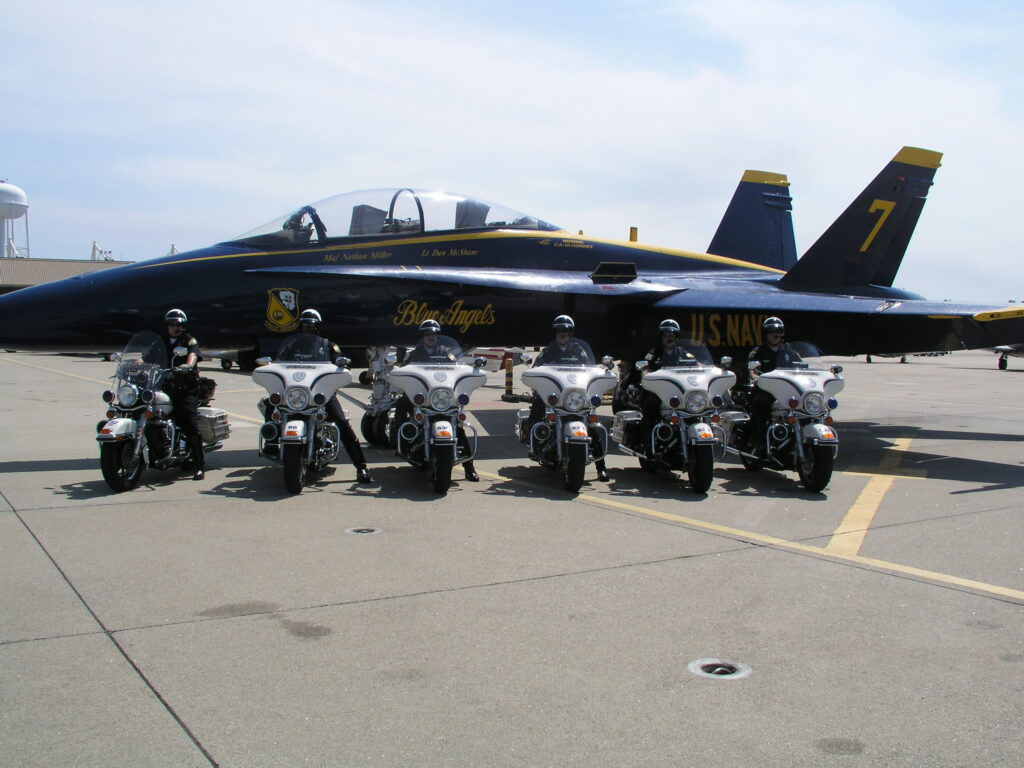
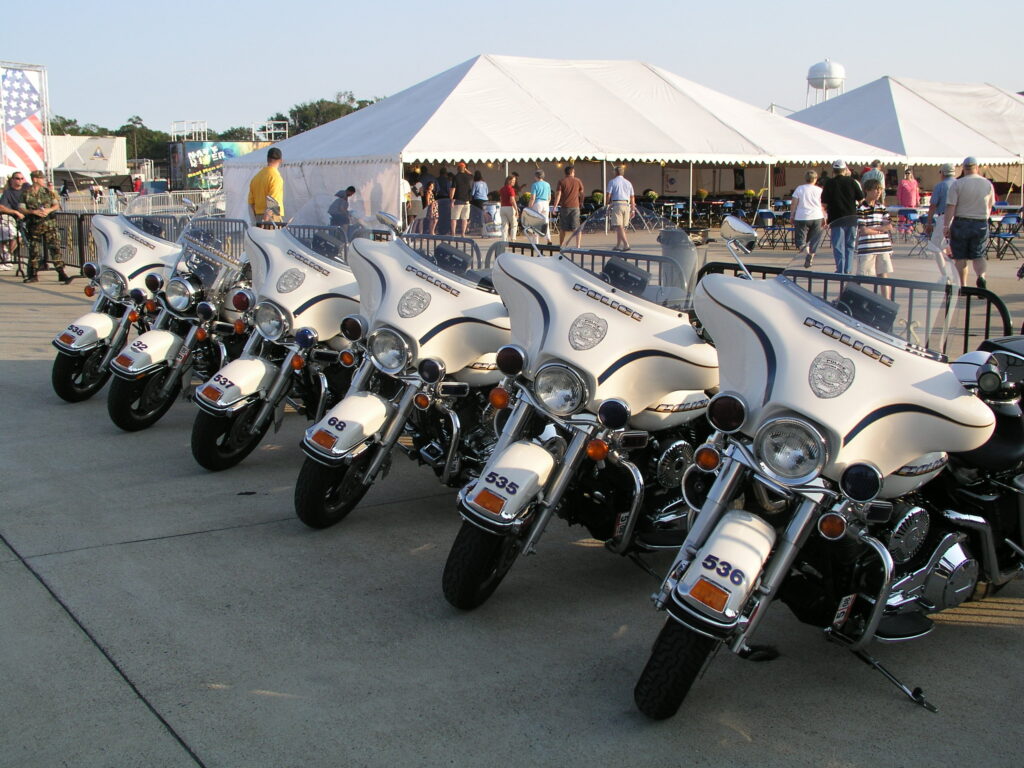
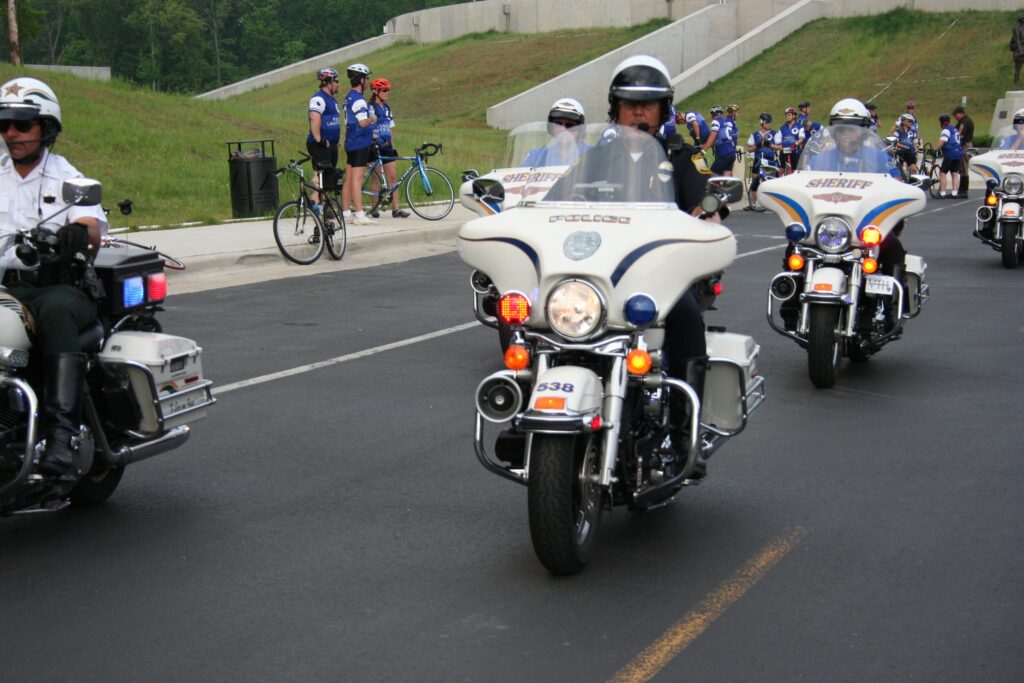
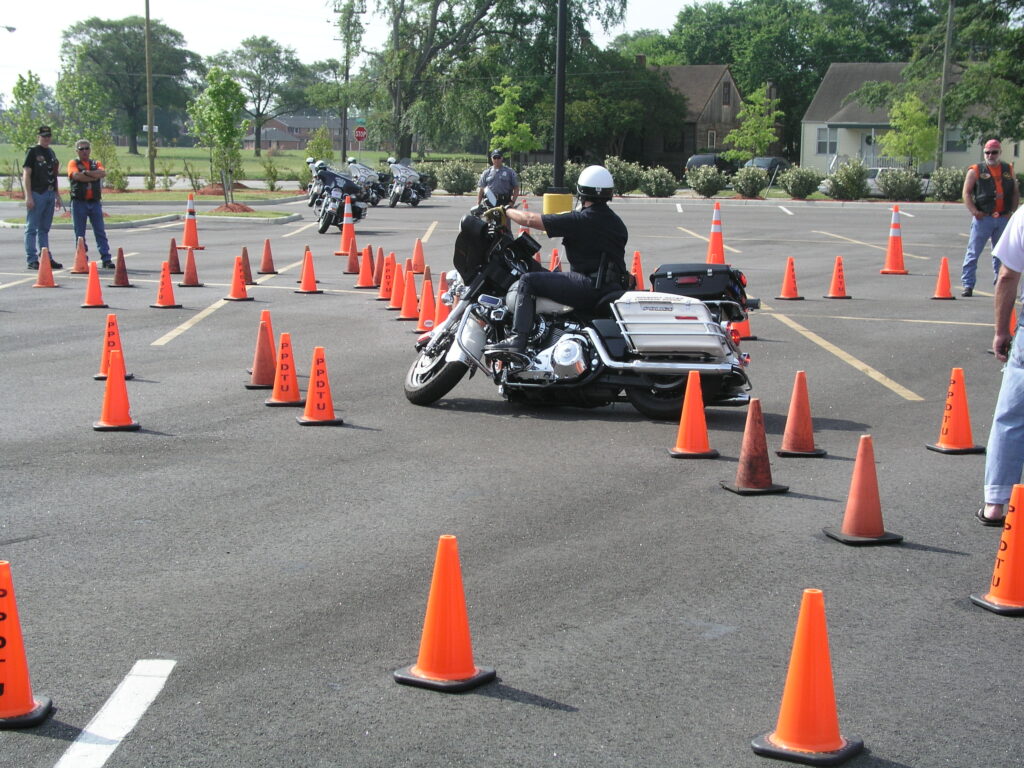
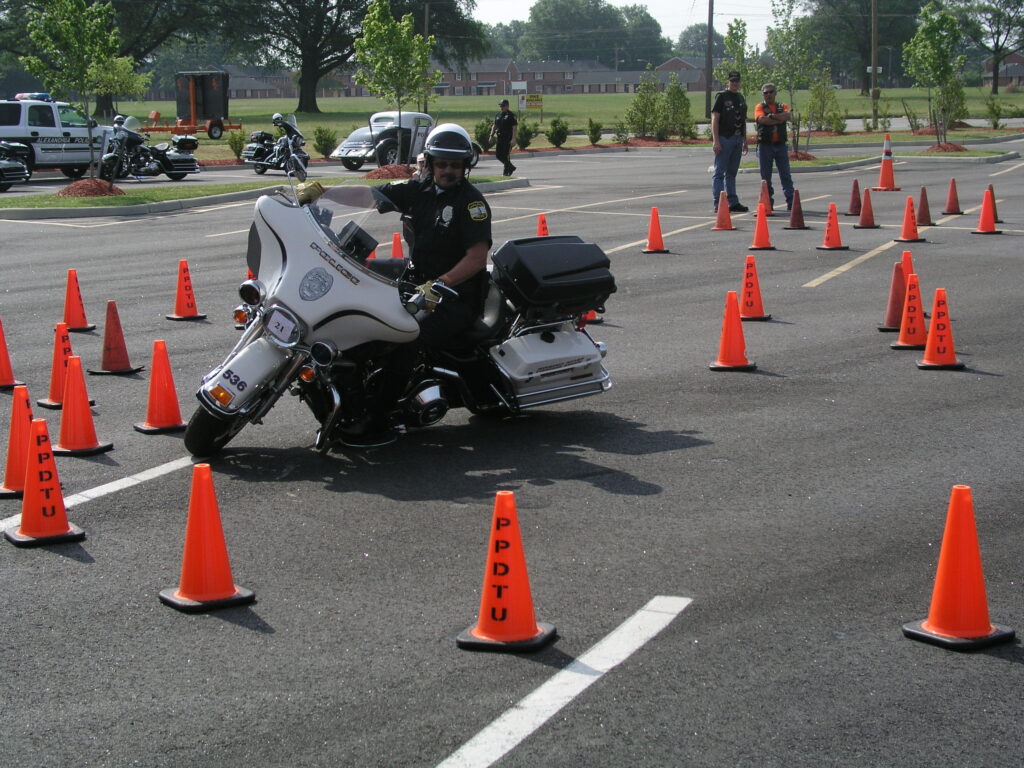
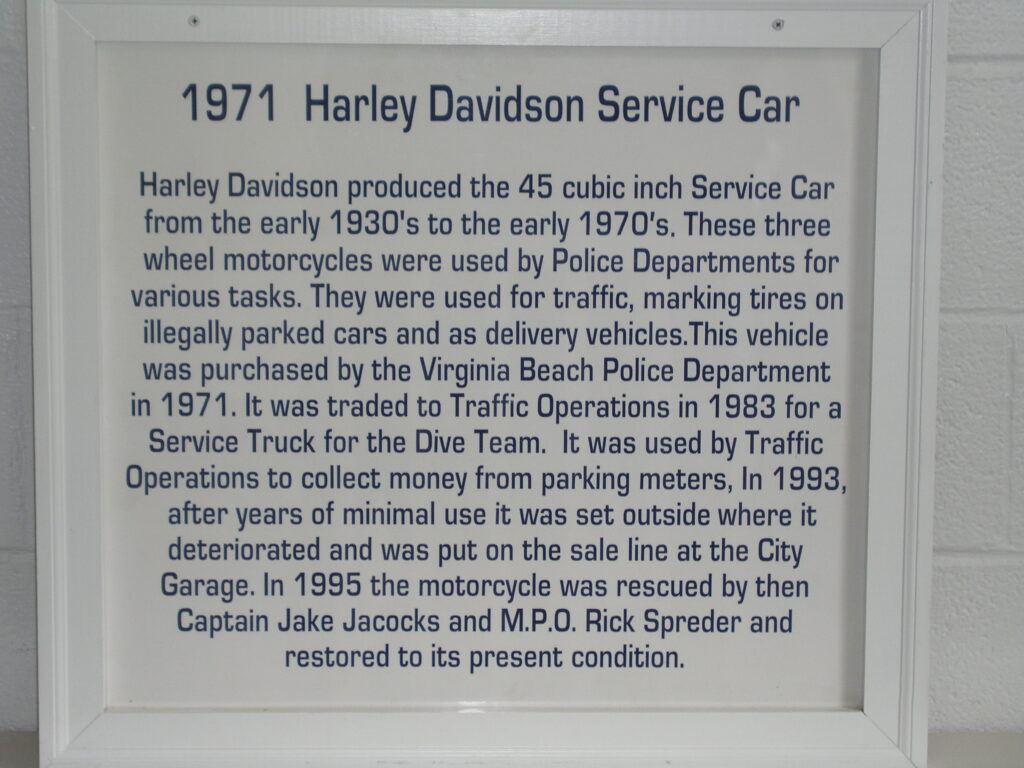
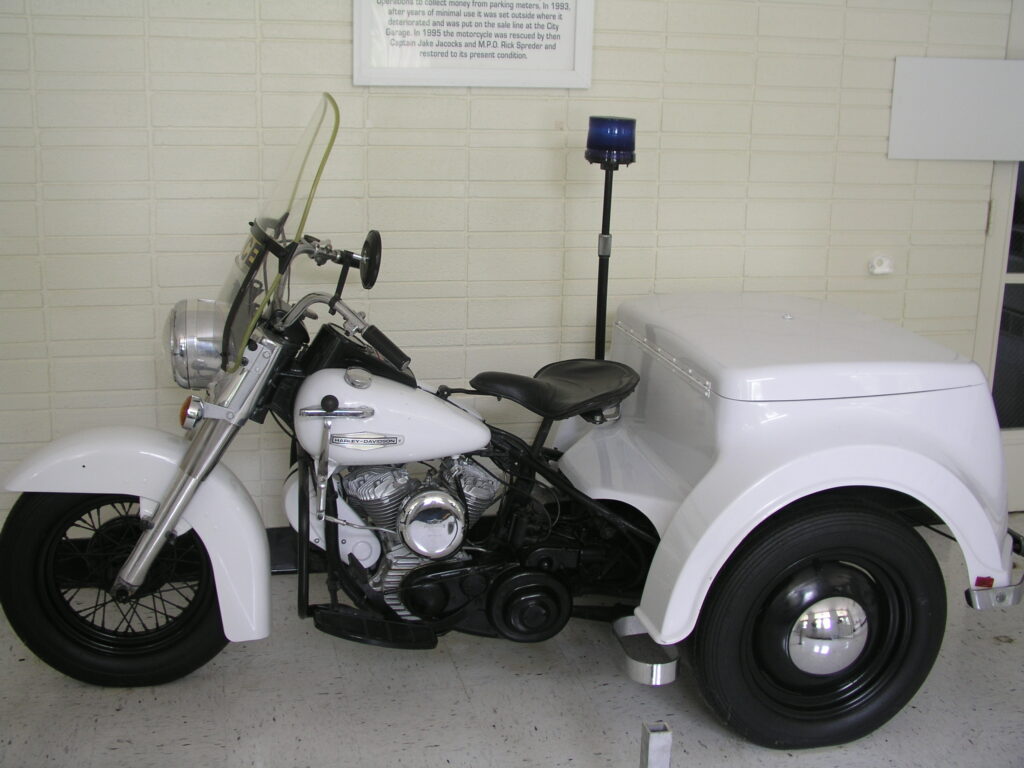
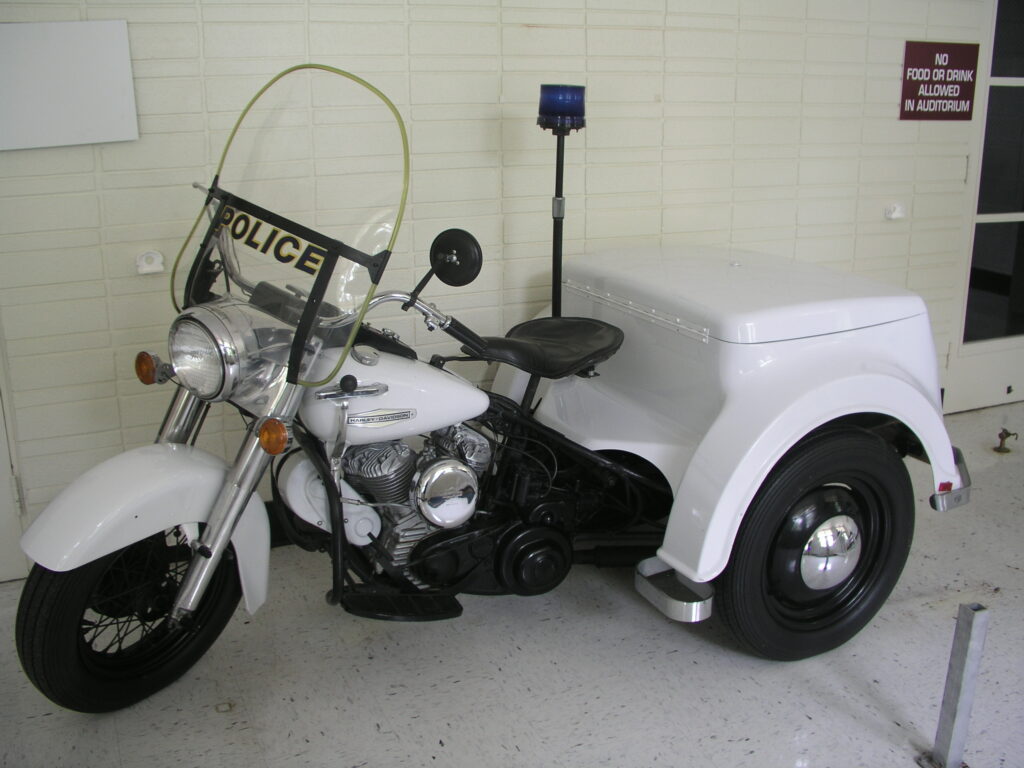
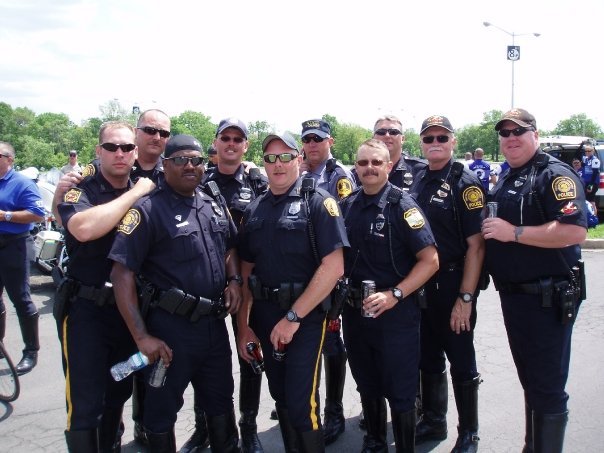
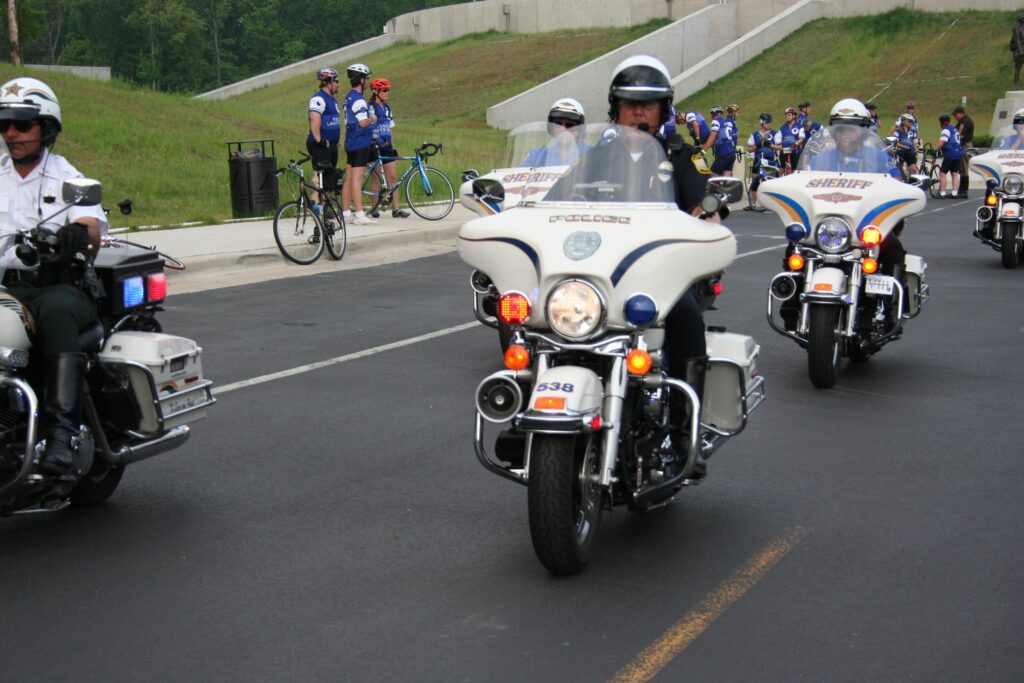
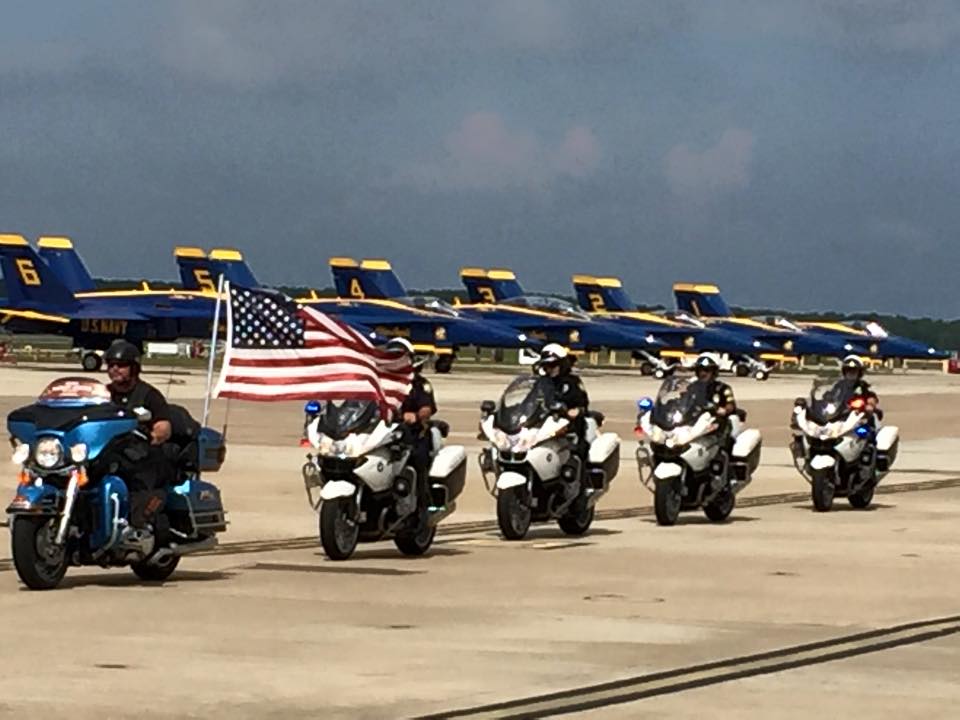
Information and Photos provided by the Virginia Beach, VA Police Department.
